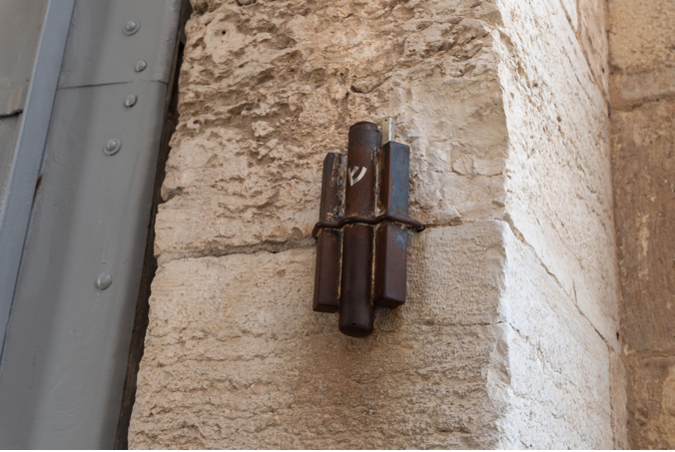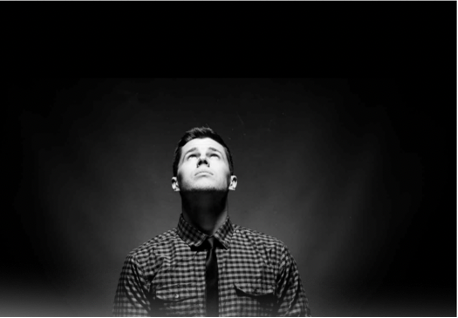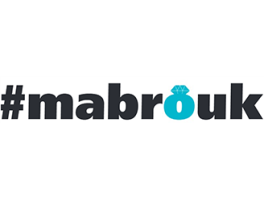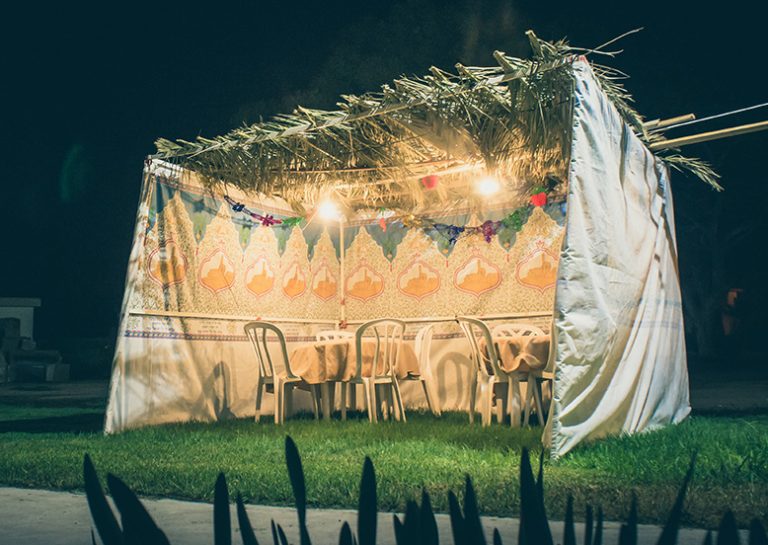Frieda Schweky
Holiday prep can be a stressful undertaking anytime, but during the summer, when no one feels like cooking even an ordinary weeknight dinner, it can be particularly daunting. This year, with Rosh Hashanah set to arrive in early September, there seems to be no way around beginning prepping for the holiday in August.
I, for one, after doing Pesach on my own for two years in a row thanks to COVID-19, plan on cooking as little as humanly possible and trying to be invited out as much as I can. I know this may not be an option for all, so I decided to see how some of our community’s shaatras are gearing up for the holiday season.
I’ll start with my fabulous mother-in-law, who does holidays like a pro. I can attest to step number one: she asks everyone for which meals they plan on joining her. She has already asked me several times this summer, and the answer remains the same: as many meals as she’s willing to cook, I’m willing to attend! I plan on cooking some dishes for her, but after a busy season in my photography business, I’m not looking to host any meals right after the summer.
I’ll let her take over from there:
Selene Schweky, Cofounder and Owner of SM Stitches
My best advice would be to shop once. Don’t waste time going back and forth to the store; make sure everything is under one roof before you begin. How do you do that? Menu plan for each meal you intend to host. Then go through each dish and see what ingredients you need to buy, and that becomes your shopping list. Make sure you have it all on one list – down to the spices. Even if some things need to be purchased last minute because it’s fresh produce, if you have it down on paper, the stress is off and you shouldn’t forget anything. Organization is key! I recommend having one paper or note on your phone, as opposed to multiple papers or notes which can get lost.
Once you have your ingredients, you should start with what can be frozen. In the weeks leading up to the holiday, whenever you cook Shabbat dinner, make double recipes and freeze one for the holiday. I do this all the time, and it makes the meals far less daunting, because you’re always chipping away.
My holiday dairy go-to’s: eggplant parmigiana, spinach jibben, calzones with egg noodles, fried cauliflower, and pistachio encrusted Chilean sea bass. These are all freezable.
My holiday meat go-to’s: Any kind of mechshe (hashu stuffed vegetable), fasuliah (white beans in tomato sauce), black beans, roast, shepherd’s pie – all freezable.
My holiday go-to’s for dessert: tiramisu, white chocolate cheesecake, almond butter cookies – all freezable.
All you should have left to do on the holiday is prepare the fresh dishes, such as salads and fish, that require same-day preparation, and pull everything you already made out of the freezer!
Enjoy!
Next, I spoke to my friend Leah, who blogs her recipes on Instagram. I know she always makes holiday meals because she lives in Deal, away from her parents and in-laws. Already in early August, she was preparing Swiss chard on her Instagram story, so I knew she’d be the perfect person to consult with on the matter.
Leah of @dumb_and_delish
When my shaatra planner says that it’s Elul, I immediately start preparing for the holidays. First things first, I write a grocery list from all the dishes I can make that will freeze and thaw well. This year, the first thing I prepared for the freezer was my Swiss chard. I got it from Wegmans, checked and cleaned it very well, and as always, I watched my giant pile of greens wilt into a small ball in my pot. (That’s a great tip, by the way – similar to spinach, when you’re cooking with Swiss chard, buy more than you think you’ll need, because it shrinks.) I make a lot more than I think I’ll need, and then I give some to my mother, mother-in-law and friends. Black-eyed peas I freeze in advance, as well as dates stuffed with ground meat – a recipe I got from the Millennial Kosher cookbook. I believe that one should still eat a regular date for the simanim, but I also like to make dishes with the simanim to change it up. In addition, brisket or any slow-cooked roast could be cooked and frozen in advance.
I have two different shopping lists. One consists of items that I can buy in advance, such as the things mentioned above that are freezable, as well as non-perishables like honey, dates, and plasticware. My other list consists of perishables such as apples, pomegranates, and veggies for salads. That stuff I try to buy around three days before the holiday.
Décor Tip From Leah
Since meat boards are so popular these days, I came up with the idea last year of doing a simanim board. Instead of putting your pomegranates, honey, apples, black-eyed peas, and other special foods in separate bowls, put them all together displayed on a wooden cutting board. This works great for small crowds. If you’re hosting a lot of people, you could make multiple boards and put them out as centerpieces. They come out beautiful, and who doesn’t love edible decor?!
Recipe by @dumb_and_delish – HOT HONEY
 Place your honey into a pot, add sliced jalapenos, and bring to a boil. Strain immediately and enjoy with caution!
Place your honey into a pot, add sliced jalapenos, and bring to a boil. Strain immediately and enjoy with caution!
This simple throw-together is surprisingly addictive, and will being some spice to your holiday table this year!
Danielle Mizrahi
Personally, I don’t prepare for the holiday far in advance. The first thing I do is try to coordinate meals with my siblings and in-laws. The married ones have their obligations, as do we. But since we all want to have a turn to see one another, we do our best to plan meals according to each other’s schedules. Then I see which dishes we’re making for each other’s meals, and I make my own menu plan.
My first point of focus when planning a menu is the simanim. I always try to change up my recipes instead of going with the same classic recipes, to keep it exciting. For example, last year, instead of plan dates, I make Medjool dates stuffed with almond butter and drizzled with dark chocolate. Then I top them with flaky Maldon salt – they’re delish! This year I’m planning to make energy balls with mashed dates, crushed almonds, and maple syrup.
After I have a set plan for the food, I like to put some effort into my decor. I feel like after COVID the shutdown, all those missed extended family meals, it’s even more important to cultivate a vibe with decor and really make things memorable. Last year, I put by each table setting miniature jars of different flavored honey, honey sticks, and little bumble bee charms. For the centerpieces, we had lemons in vases, as well as yellow and orange flowers. It was so special and we all really enjoyed!
Lynn Sued
I like to see who’s coming to which meals before I make my menu plans. I do this because I like to make something for everyone who comes that he or she will like. For example, I know my daughter Annie loves hamid, my daughter Sophia loves my red sauce, and my son-in-law loves stuffed peppers. I make sure not to make anything with mushrooms when my other son-in-law is coming, because he doesn’t like them. I accommodate their preferences so they feel special and enjoy coming over.
For my meat dinner meals, I like to do one meal of Shabbat-style food, and the other with Holiday-themed food. The Shabbat-styled meal will consist of the typical Syrian dishes that I make weekly. I try to keep them different because I generally have the same guests on both nights.
For dairy lunches, I try to keep it light, because the nighttime meals are heavy. For a light dairy lunch, I’ll do pickups like spinach tarts, sambusaks, olive balls, koosah jibben in cupcake liners, baby pizzas, etc. I’ll make a few salads and serve salmon. Sometimes, if I’m having lots of guests, I’ll also make a ziti or pesto pasta.
I know it’s in style to put nice table décor, but I don’t focus much on that, as I prefer putting all of my energy into cooking. I won’t bake, either; it’s not my thing. I’ll have my daughter or daughter-in-law bake something for dessert, or I’ll buy from a community baker.
The absolute best part of the holidays is spending quality time with my family – no phones, no distractions. We talk, we laugh, we catch up. It’s such a blessing!
My number one piece of advice for holiday preparations would be: don’t stress! No matter what, somehow it all gets done, and is beautiful.
Michelle Oved @grandmasgarlic
I typically make the evening meals for Rosh Hashanah. Before anything else, I make and freeze the simanim in advance. I prepare the quince jelly for shehehiyanu, following my mom’s recipe, which I proudly share below. I make basic loubieh, which is very easy. Swiss chard is a challenge to clean properly, so I clean and chop it in advance, cook it down, and freeze it. The day before the holiday, I defrost it and cook it with tabileh (chopped meat). The leek is cleaned, cooked, and frozen in advance, as well. Closer to the holiday, I defrost it and make mini edge out of it. I either fry patties or put small amounts of the mixture into mini muffin tins and bake them. They come out very uniform in the muffin tins, and are much easier to prepare than frying. The head of lamb is simple – I just roast it in the oven with rosemary and garlic. We traditionally use fresh dates instead of dried. The key is to freeze them in advance, and then, several hours before the meal, allow them to defrost fully. If you eat them without freezing them, or don’t allow them to defrost, they will be unripe and hard, and will make your mouth dry. If you freeze and defrost properly, they should be mushy and taste delicious.
For this holiday in particular, I really love focusing on decor. I always make sure something new and beautiful is on the table, whether it be new chargers, place mats, napkin rings, a table cloth, etc. The table has to look pretty – if it looks good, it feels good!
Getting back to the food, I have a secret ingredient that adds a little boost to all my dishes: my “Grandma’s Garlic.” It’s a special roasted and marinated garlic which I’ve recently started selling. I add it to the majority of the staple dishes: chicken, roast, kibbeh balls, potatoes – you name it. My family loves it. I even bake it into my challah!
Some dishes we typically serve on this holiday are potato sofrito, veal pocket, and my mother’s special roast dish – she gets top of the rib roast sliced thin from the butcher, stuffs it with hashu, rolls it, and then cooks it with mushrooms and onions. It’s delicious! We also serve the leftover lubiah, any kind of mechsi, kibbeh with peas, rice, and so on.
What I learned from interviewing these amazing women, and discussing this topic with others along the way, is that a lot of hard work and love goes into each and every holiday meal. I was also reminded of how our special, cherished culture and heritage are infused into every aspect of the preparations, at every step along the way. These remarkable mothers and grandmothers are planning meals for their families so they can come and spend quality time together over good food, enjoying recipes that have been handed down from mother to daughter for generations. At the same time, the younger generation likes to put a spin on some of the classics – no doubt being influenced by Jewish food bloggers on social media who are constantly trying to reinvent some of our age-old staples. The new and the old are both wonderful and have a place on our holiday tables. The hours of hard work and painstaking attention to every detail pays off when these women see family members catching up and bonding, enjoying their favorite homecooked dishes and praising the chef and hostess.
Until next time, wishing you and your families a happy and healthy new year,
Frieda Schweky



Selteya recipe (Swiss chard with chop meat)
By Suzy Mosseri
- Rinse two heads of Swiss chard individually very well.
- Chop it and rinse again.
- Add to a pot with a bit of water, and boil.
- When it shrinks, allow it to cool, put in a zip-top bag, and freeze.
- Defrost when cooking for the holiday.
- Chop 4-5 celery stalks, and sauté with 4 cloves of garlic.
- Add Swiss chard mixture and cook until it is all soft and combined.
- Add tebileh (sauteed chop meat) and 3-4 raw eggs, scrambled.
- Add salt and garlic powder to taste.
- Cook down until dry, and it’s ready to serve!
Quince Jelly

By Suzy Mosseri
- Chop 4 quince apples into cubes and put on stove.
- Add 1½ cups sugar and a drop of water to the pot.
- Add 1 tsp of vanilla extract.
- Use a silicone spatula to stir so as to not smash quince.
- Cook on very low flame. Once it boils, add a tsp of lemon juice.
- It should keep its form, but become textured like a jelly!
- Allow to cool and store in the fridge.











 Place your honey into a pot, add sliced jalapenos, and bring to a boil. Strain immediately and enjoy with caution!
Place your honey into a pot, add sliced jalapenos, and bring to a boil. Strain immediately and enjoy with caution!














